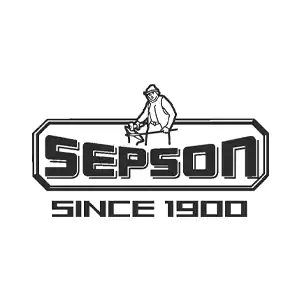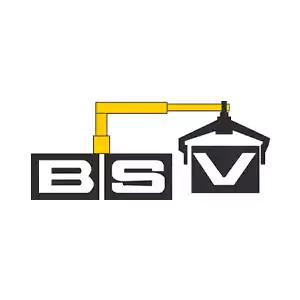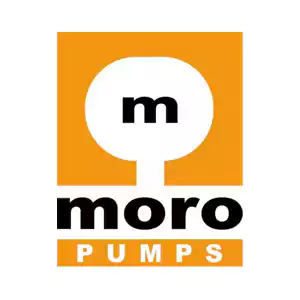Hytec-Hydraulic & Transport equipment | Piling & Foundation Equipment
0
0,00 د.إ
No products in the cart.
No products in the cart.
P.O.Box. 3107
Ras al khor industrial area 2,
Dubai, U.A.E.
Phone: +971 4 333 1399,
E-mail: sales@hytec.ae
P.O.Box. 8616
Musaffah M 39,
Abu Dhabi, U.A.E.
Phone: +971 2 551 5657
E-mail: abudhabi@hytec.ae
P.O.Box. 958
Postal code 133,
Misfah Industrial Area, Muscut, Oman
Phone: +968-22344445
E-mail: muscat@hytec.om
P.O.Box. 958
Postal code 133,
Ghala Industrial Area, Muscut, Oman
Phone: +968-24595365
E-mail: ghala@hytec.om
P.O.Box. 480
Postal code 221,
Salalah, Oman
Phone: +968 2 321 2585
E-mail: salalah@hytec.om
P.O.Box. 958 PC: 133
Ouhi Industrial area,
Sohar, Oman
Phone: +968 2 206 3626
E-mail: sohar@hytec.om


























Elastomers, respectively rubber materials are polymers, which are chemically cross-linked by the vulcanization process. Due to their chemical bonds, they do not melt, but rather begin to decompose at high temperatures.
Nitrile butadiene rubber (NBR) is a family of synthetic rubber copolymers of acrylonitrile and butadiene. Although its physical and chemical properties vary depending on the polymer’s composition of nitrile, this rubber types are generally resistant to oil, fuel, and other chemicals.
SKF Ecorubber-1 is an elastomer based on acrylonitrile-butadiene rubber (NBR), which is used for U-cups, packings, special seals and various components. This material has good resistance to mineral oils, greases and HFA, HFB and HFC pressure fluids. However, the material is not resistant to glycol-based fluids, HFD fluids, aromatic fluids (such as benzene), esters, ketones and amines or concentrated acids and bases.
The term nitrile rubber is used for acrylonitrile-butadiene rubber (NBR). This material has very good engineering properties and is a general-purpose sealing lip material. It is a copolymer manufactured from acrylonitrile and butadiene that provides good resistance to the following media:
Nitrile rubber also tolerates short-term dry running of the sealing lip. The permissible operating temperature range of nitrile rubber is –40 to +100 °C (–40 to +210 °F). For brief periods, temperatures of up to 120 °C (250 °F) can be tolerated.
SKF also offers a special nitrile rubber compound with a temperature range between –55 and +110 °C (–65 and +230 °F).
FKM (or FPM by ISO) are elastomers based on fluoro rubbers and have outstanding resistance to heat, weathering and many other chemicals.
SKF Eccorubber-2 is an elastomer based on fluororubber (FPM, FKM), which can be used for U-cups, lip seals, packings, wipers and special seals. Its outstanding properties include high resistance to heat, ozone, many chemicals and it is all-weather-proof. SKF Ecorubber-2 is compatible with mineral oils and greases containing sulphur, HFD pressure fluids (nearly all phosphate esters and chlorinated hydrocarbons), crude oil and sour gas. SKF Ecorubber-2 is not resistant to anhydrous ammonia, amines, ketones, esters, hot water and low molecular weight organic acids.
The fluoro rubber (FKM) compound, SKF Duralife (previously named LongLife), has been developed by SKF and is characterized by its very good wear, thermal and chemical resistance. Its resistance to weather and ageing from UV light and ozone is also very good and its gas permeability is very slight.
SKF Duralife has exceptional properties even under harsh environmental conditions and can withstand operating temperatures up to 200 °C (390 °F). The material is also resistant to oils and hydraulic fluids, fuels and lubricants, mineral acids and aliphatics as well as aromatic hydrocarbons that would cause many other seal materials to fail. Seals made of SKF Duralife can also tolerate dry running of the lip for short periods. The seals should not be used in the presence of esters, ethers, ketones, certain amines and hot anhydrous hydrofluorides. Because of the compound’s valuable properties, SKF manufactures seals with sealing lips made of SKF Duralife for all common shaft diameters.
At temperatures above 300 °C (570 °F), all fluoro elastomers and PTFE compounds give off dangerous fumes. This can occur, for example, if a welding torch is used when removing a bearing. Although the fumes are only produced at such high temperatures, once heated, the seals will be dangerous to handle even when they have cooled down. If it is necessary to handle PTFE or fluoro elastomer seals that have been subjected to the high temperatures mentioned above, the following safety precautions should be observed:
If there is contact with your skin, this should be washed with soap and plenty of water. Wash your eyes with plenty of water if these materials get into your eyes. A doctor should always be consulted. This also applies if the fumes have been inhaled.
EPDM rubber (ethylene propylene diene monomer (M-class) rubber), a type of synthetic rubber, is a group of elastomers with outstanding resistance to heat, ozone, weathering, hot water, steam, washing agents and polar organic solvents.
SKF Ecorubber-3 is an elastomer based on ethylene-propylene-diene rubber (EPDM), which can be used for U-cups, lip seals and packings. SKF Ecorubber-3 has an outstanding resistance to hot water, steam, washing agents and polar organic solvents. SKF Ecorubber-3 is not resistant to mineral oil and other unpolar media. The stability to weathering, ozone and ageing is good. If used in glycol-based brake fluids, national regulations have to be adhered to.
Hydrogenated nitrile butadiene rubbers are saturated copolymers of acrylonitrile and butadiene, suitable for applications with aliphatic hydrocarbons, mineral oils. The physical and chemical properties vary depending on the polymer’s composition.
SKF Ecorubber-H is a hydrogenated or saturated acrylonitrile-butadiene rubber (H-NBR), which is suitable for applications at higher service temperatures in aliphatic hydrocarbons like propane or butane, mineral oils, greases as well as sulfonated crude oil. Furthermore, it can be used in many diluted acids, bases, salt solutions and glycol-water mixtures. SKF Ecorubber-H is not compatible with fuels, which have a high content of aromatic hydrocarbons (premium blend petrol), gasolines (petrol / alcohol blends), ketones, esters, ethers and chlorinated hydrocarbons like trichloroethylene and tetrachloroethylene.
SKF Duratemp is a hydrogenated nitrile rubber (HNBR) developed by SKF that combines the wear resistance of SKF Duralip with increased high-temperature resistance which is shown in the diagram 1. SKF Duratemp is also more resistant to chemical attack, weather, ageing and ozone. The upper operating temperature limit is 150 °C (300 °F), which is significantly higher than that of ordinary nitrile rubber. SKF Duratemp is mainly used for seals for heavy industrial applications or where extended service life is required.
Silicone rubbers (MVQ or VMQ) is characterized by high thermal, weathering and ozone resistance. Silicone rubbers are mostly used for static or quasi-static applications and should not be exposed to dry running.
SKF Ecosil is a silicone rubber (MVQ), which can be used for O-rings, gaskets and special seals. Due to its poor mechanical properties compared to other rubbers, SKF Ecosil is mainly used for static applications. It is highly resistant to weathering, ozone and ageing. The compatibility with mineral oils depends on the content of aromatic hydrocarbons in the oil.
Carboxylated nitrile rubbers (XNBR) are improved versions of NBR types that combine the technical properties of nitrile rubber (NBR) with an increased resistance to wear. It is mainly used for seals for heavy industrial applications.
SKF Duralip is a carboxylated nitrile rubber (XNBR) developed by SKF that combines the good technical properties of nitrile rubber with an increased resistance to wear which is shown in the diagram 1. It is mainly used for seals for heavy industrial applications. Seals made of this material should be chosen when abrasive contaminants like sand, soil and scale could reach the seal counterface on the shaft.
Polyacrylate elastomers are more heat resistant than nitrile rubber or SKF Duralip. The operating temperature range for polyacrylate elastomers lies between –40 and +150 °C (–40 and +300 °F) and in some fluids the upper limit may be extended to 175 °C (345 °F). Seals of polyacrylate are resistant to ageing and ozone and are also suitable for use with lubricants containing EP additives. They should not be used to seal water, acids or alkalis etc. Dry running should be avoided.
Our website uses functional cookies to offer good browsing and analytical cookies to measure statistics. By clicking ‘Accept all cookies’ you consent the placement of marketing cookies, used to personalize your experience. Our cookie policy details the cookies we set and how they are used. Here you can also manage your cookie settings at any time.
No products in the cart.